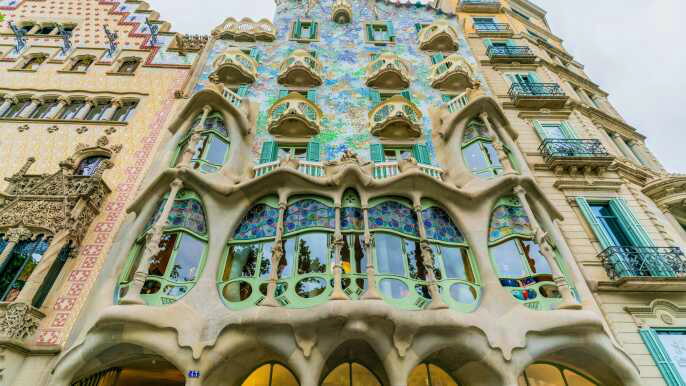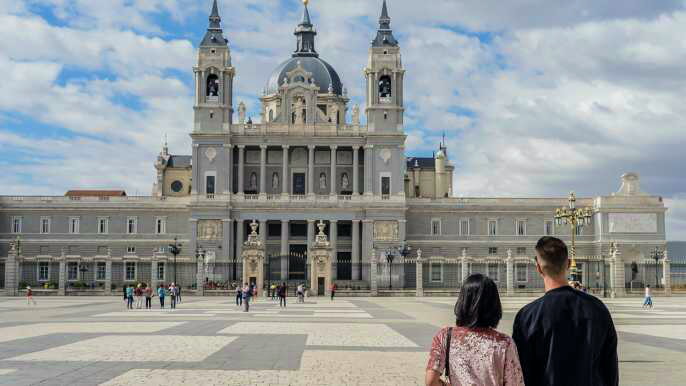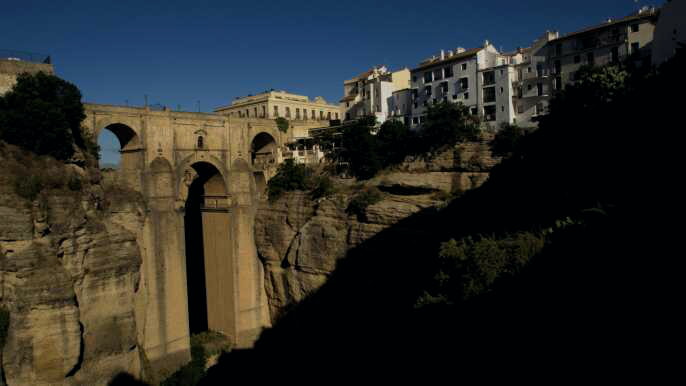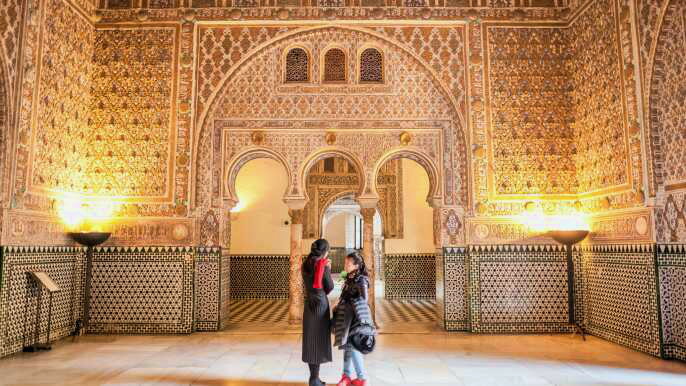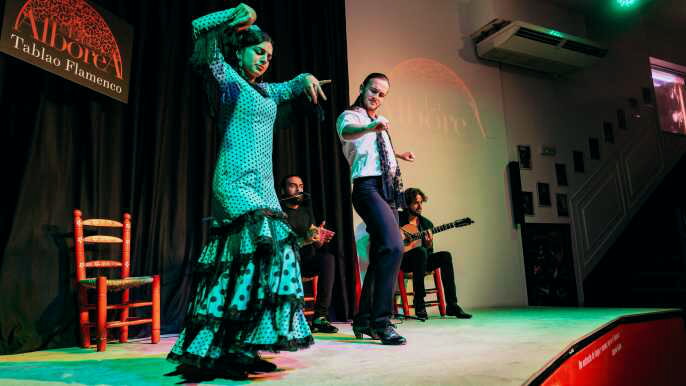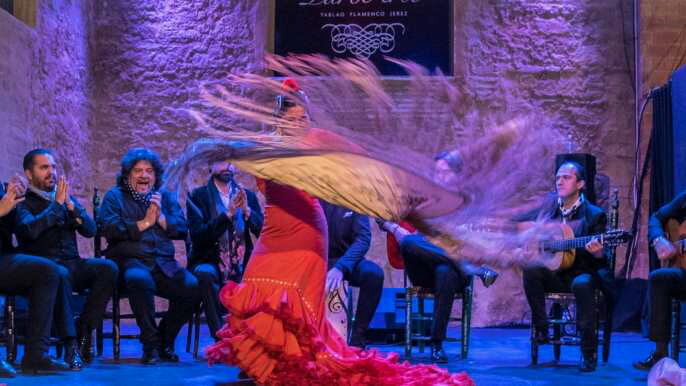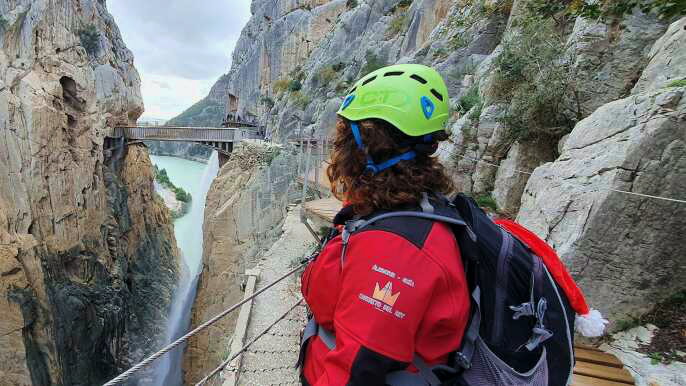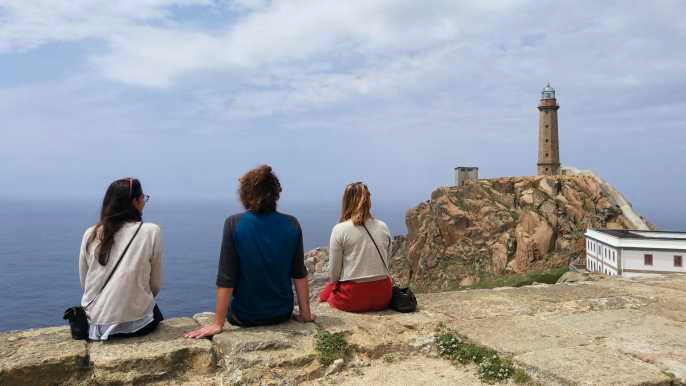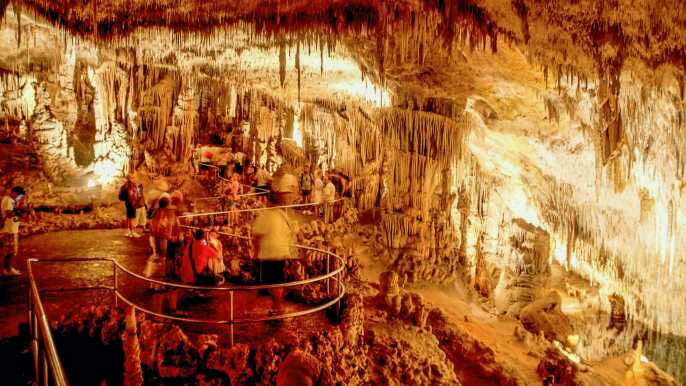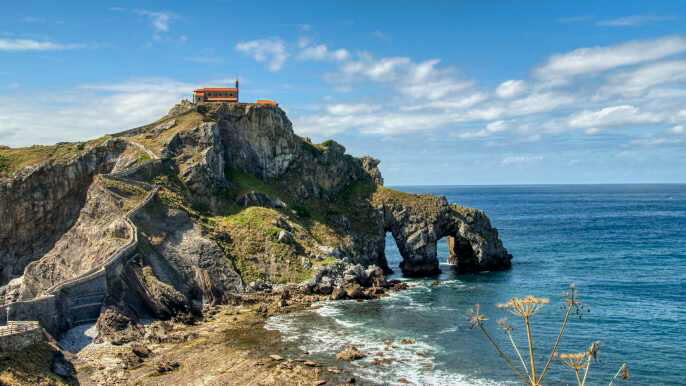Spain is a country of stunning landscapes. It boasts Mediterranean beaches, antiquated medieval villages, and countless glittering attractions.
Spain’s rich history has influenced the country in all aspects. You can see this in the country’s architecture, gastronomy, and religion.
1. Alhambra
The Alhambra in Granada is one of the most iconic monuments in Spain. Its imposing ruins rise up on a steep hill above the city of Granada, a setting that feels like something out of a fairy tale.
Its origins date back to Roman times, but it wasn't until the 14th century that the site was transformed into a palace. Initially commissioned by Moorish emir Mohammed ben al-Ahmar, it was later taken over by Yusuf I Sultan of Granada.
A UNESCO World Heritage Site, the Alhambra is home to some of the finest palaces in medieval Europe. Its elaborate decorative programs and enchanting gardens make it unique among European medieval palaces.
You can take a guided tour of the Alhambra for an in-depth experience or opt to visit independently. However, if you do decide to go it alone, be sure to book ahead as official tickets often sell out quickly (especially during high season).
There are four ticketed sections of the Alhambra: The Palace of Charles V, the Nasrid Palaces, the Generalife Gardens and the Alcabaza. To get the best experience, we recommend taking a day to explore all of them.
If you're visiting the Alhambra on your own, it's recommended that you visit in late spring or summer. This is when you'll be able to enjoy the full extent of the gardens and see all of the ruins.
The Alhambra is a UNESCO World Heritage Site and is one of the most popular tourist attractions in the country. Its rustling Arabic myths and whispered ghosts are unmissable!
The Alhambra is a must-see on any list of things to do in Granada. The ruins are beautiful on their own and the vistas at sunset are nothing short of stunning.
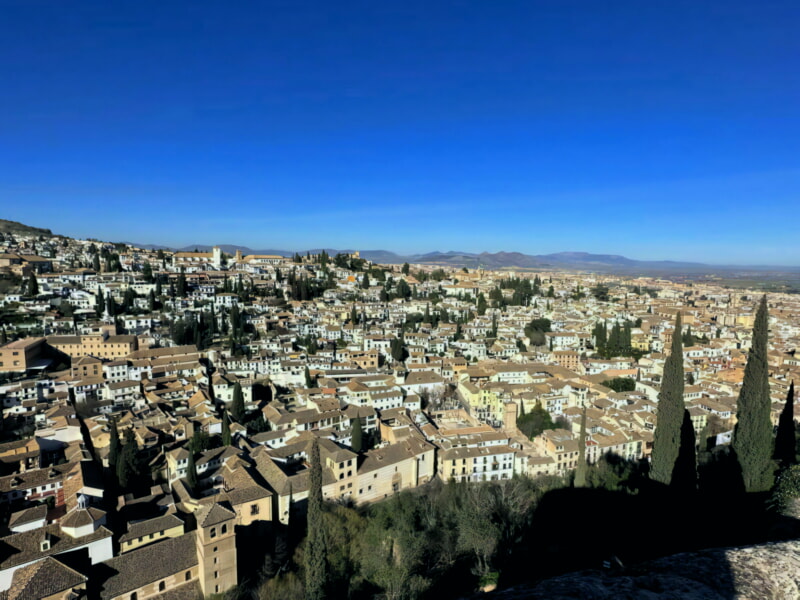
2. Prado Museum
The Prado Museum is one of the world’s greatest museums, boasting a huge collection of works by famous artists from all over Europe. The collection features Spanish Baroque painters like Diego Velazquez, El Greco and Jusepe Ribera, as well as a number of masterpieces from Italian, French and Dutch masters such as Rubens, Bosch and van der Weyden.
Whether you’re an art aficionado or just a student on the hunt for your next art history course, the Prado Museum has a wide range of attractions and exhibits that will keep you busy throughout your visit. You can also choose to book a guided tour that will help you absorb the most of your time here.
There are many reasons to make the Prado Museum a priority during your stay in Madrid, including its collection of Flemish art and impressive permanent exhibitions. A strong relationship between Spain and Flanders meant the museum received a wealth of paintings from this period, in particular from the Flemish Primitives such as Rogier van der Weyden’s The Descent from the Cross.
In addition to these paintings, the Prado Museum is home to some of the most important Spanish art from the 17th century, including works by Caravaggio and Carracci. It’s also a great place to see some of the best works from the European Northern Renaissance, such as Hieronymus Bosch’s The Garden of Earthly Delights and Rubens’s The Adoration of the Magi.
The museum is a large, sprawling structure, so you might need several visits to fully explore its collections. You’ll want to pick up a map at the entrance and plan out your itinerary ahead of time. You can also buy tickets for certain exhibitions online, which can save you a lot of time in queues and security checks.
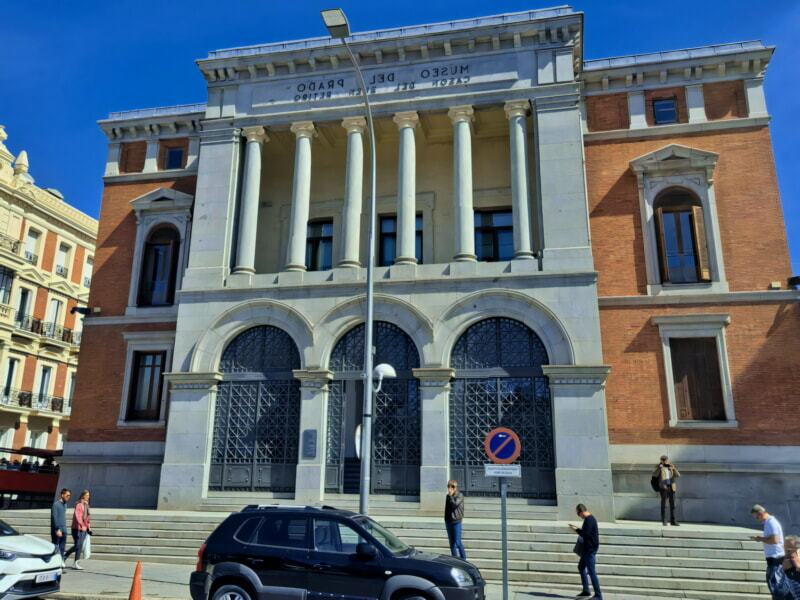
3. Montanejos Springs
If you’re looking to immerse yourself in nature and experience a traditional Spanish town, a trip to Montanejos is the perfect fit. The charming village is home to thermal springs, waterfalls and other natural beauty spots that will leave you breathless.
The most popular attraction in Montanejos is the Fuente de los Banos, or the hot springs, which are formed from a fast-flowing river in the mountains. The water maintains a constant temperature of 25degc throughout the year and has been considered therapeutic for centuries.
Another must-see in the village is El Chorro, a reservoir that retains the water of the Mijares River. Its vertical limestone walls are beautiful and make a memorable backdrop to the water.
Despite its beauty, El Chorro also plays a practical function in the village as it keeps floodwaters from damaging houses and buildings in the area. It is also home to a 19th-century flour mill that is currently being restored, although the exterior structure has been maintained.
In addition to the thermal springs, Montanejos is a great place for a hike or to try out some outdoor adventure sports. There are a number of walking routes available in the village and the surrounding areas, as well as canyoning and rock climbing trails.
You can book a day trip that includes round-trip transport from Valencia and prebooked entry to the hot springs, as well as lunch in Montanejos village. The package also includes additional perks like wine and other surprises.
If you’re looking for a comfortable place to stay in Montanejos, consider booking one of the best Airbnb vacation rentals near this picturesque village. A rental like “3 Bedroom Accommodation In Montan Ii - Montanejos Ref 019′′ will be the perfect choice for your weekend getaway. Or you can opt for a rustic house like “Rustic House Fuente La Reina - Montanejos Ref 045" that is just around 1 mile east of the town.
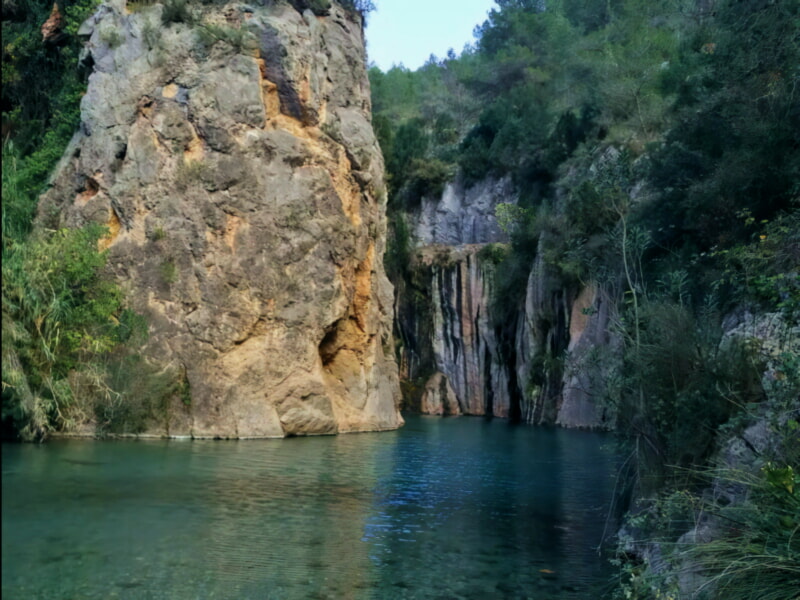
4. San Juan de Gaztelugatxe
Located in the Basque Country, San Juan de Gaztelugatxe is a natural site accessed via a zigzagging stone bridge. Visitors have to traverse a double-arched bridge, before climbing a path of 241 steps to reach the picturesque hermitage at the top of the rock.
There is no shortage of accommodation in the area. From comfortable hotels and cosy hostels in the town of Bermeo to lodges or rural homes that afford stunning views, there’s something for everyone.
As well as being a tourist attraction, Gaztelugatxe is also a major pilgrimage site, where St John may have left his footprint. Upon reaching the hermitage, it is customary to ring the bell three times.
In recent years, a ticketing system has been implemented in order to control the crowds & keep tourists from overwhelming this small clifftop shrine. Check out the official Gaztelugatxe website for more information.
The hermitage itself has a long storied history, involving fires & wars (no dragons yet!) - and has been rebuilt several times. Its rocky outcropping is accessed by a 10th-century stone bridge that's reminiscent of the Great Wall of China.
To get there, the best way is to take a day trip from Bilbao or San Sebastian. The latter is a longer journey with fewer tours available, but it’s worth the effort for a trip to one of the most spectacular sights in the area.
The route to Gaztelugatxe is quite challenging and can be very windy, so make sure you have sturdy shoes or a good pair of walking boots. There are no cars allowed in the vicinity, so you will need to walk along a pathway. You can find a parking lot at the start of the route, but be aware that it is difficult to find a place to park your car when there are a number of people visiting, especially during weekends and holiday periods.
5. Plaza de Toros de la Real Maestranza de Caballeria de Sevilla
The Plaza de Toros de la Real Maestranza de Caballeria de Sevilla is one of the most important bullfighting arenas in Spain and, as a result, has one of the world's best-known bullfighting festivals. It can seat up to 12,000 spectators and is located in the El Arenal harbour district of Sevilla.
It is a beautiful building that holds memories of some of the most historic moments in bullfighting history. It is a must-see for anyone with an interest in the sport and it's a great place to experience the magic of bullfighting.
There are a number of different guided tours, which run throughout the day, and take you through the museum and into the arena. You'll find lots of information on the history of bullfighting and famous matador utensils, as well as paintings and prints that depict different aspects of the sport.
The most popular time to see bullfights in Sevilla is during the Feria de Abril, but there are also fights throughout the year until September. Tickets are usually available online or at the taquilla, but you can also find them on the day.
In addition to the ring itself, there is a small chapel dedicated to the memory of Curro Romero Lopez, a famous bullfighter from Sevilla. It is a popular place to watch a corrida, and there are plenty of seats around the edge of the ring so that you can get a close view of the action.
If you're planning to visit the Plaza de Toros de la Real Maestranza, it's a good idea to book your tour well in advance. It's a large venue and there is a good chance that the ring will be full, so it can be a busy place to visit.
